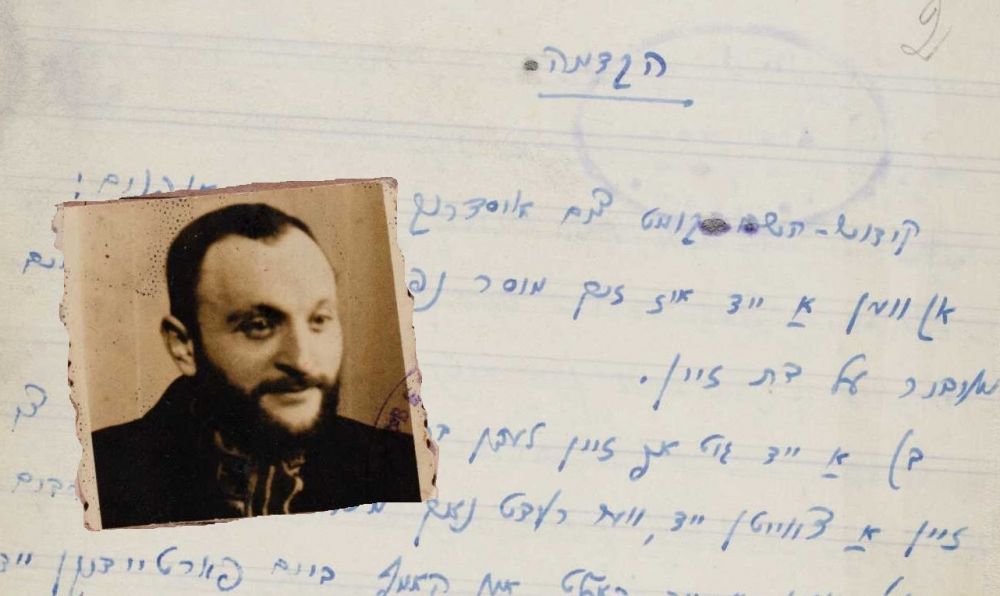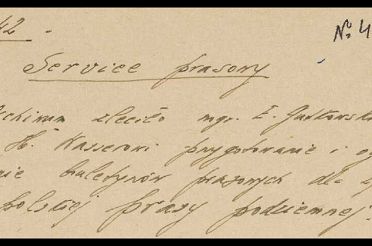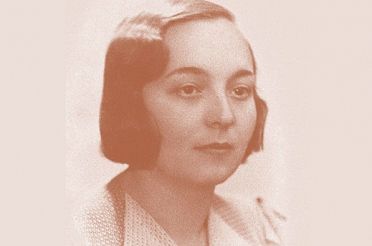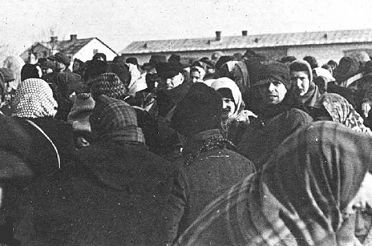Piotrków
Between Rosh Hashanah and Yom Kippur 5700 a car with German officers arrived in front of the synagogue. They took all the Torah scrolls, more than thirty in number, and threw them on the square opposite the synagogue. The square was surrounded by a wooden fence that separated it from Piłsudskiego and Jerozolimska Streets. Houses and buildings belonging to Jews formed the border of the square on both sides.
There was a door in the wooden fence in the stretch along Piłsudski street. An armed gendarme stood by this door, making sure that the Jews did not carry the Torah scrolls from there.
Day after day passed, and so came Sukkot. It rained frequently. The Torah scrolls in the square, some even without dresses, were scattered in puddles and in the mud that had been created by rainfall.
The hearts of Jews who passed the square and saw the disgrace of the Torah, the greatest holiness, this great offense against God, were bleeding, and tears were shedding from their eyes. Every passerby was clenching his fists in their pockets, but there was nothing he could do.
The desecration of sanctity greatly concerned a long-time Bund judge in the Piotrków town hall, a member of the town council, leader of the Jewish commune, one of the pillars of the Bund in Piotrków – Abraham Wajshof. [3]
Wajshof organized a few Bund comrades, and when the gendarme was guarding the door in the fence on Piłsudskiego Street, they got to the square through the neighboring Jewish house. Almost in front of the gendarme, they quickly took the Torah scrolls and returned the same way they had come. When the gendarme came to the square after a short time, he found no Torah scrolls there. (…)
In the summer of 1941, all local Jewish leaders were arrested in Piotrków, including: president Tenenberg, Wajshof, Piotrków town hall judges and Jakub Berliner, chairman of the community board, a man who devoted his life to social work (…), Wajngart, Frajnd, Adler, Zojer and others. They were all taken to Auschwitz and finished there.
May their memory be blessed. [4]



![widok na zamek i synagogę w Będzinie ok. 1900 polona COMP.jpg [296.01 KB]](https://www.jhi.pl/storage/image/core_files/2022/3/11/07a4cf4bea1f9a848ace718fc0df4cc3/jpg/jhi/preview/widok%20na%20zamek%20i%20synagogę%20w%20Będzinie%20ok.%201900%20polona%20COMP.jpg)
![Synagoga_w_Sierpcu_wiki.jpg [359.61 KB]](https://www.jhi.pl/storage/image/core_files/2022/3/11/fb754220fe8d680592eb44b84e9f624a/jpg/jhi/preview/Synagoga_w_Sierpcu_wiki.jpg)



![MKiDN_bialy_logotyp_strona_ŻIH_EN.png [10.32 KB]](https://www.jhi.pl/storage/image/core_files/2023/1/12/0fbb15388d1a5d89c65891b6ce66941c/png/jhi/preview/ZNAK%20ENG.png)